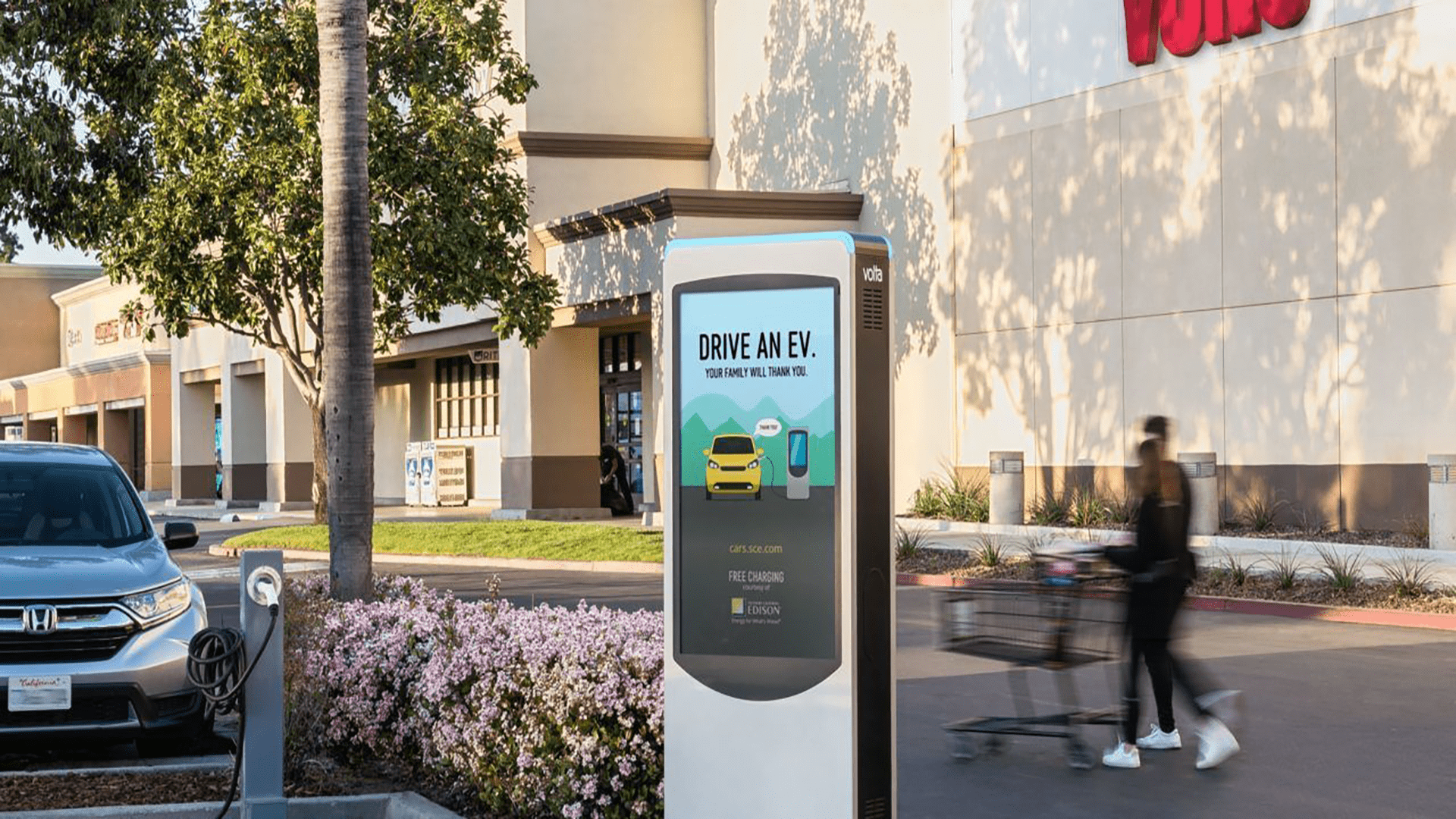Source: Volt Charging
The perfect partnership. In the US, Volta Charging (a commercial network of EV charging stations) has partnered with the largest electricity provider in southern California and Albertsons grocery stores to advertise the benefits of driving electric vehicles. The partnership sees Volta’s eye-catching digital displays function as a sophisticated media network to promote the shift to sustainable technology. Located in front of grocery stores, Volta’s charging stations allow customers to charge their cars whilst they shop, offering an easy win-win for early adopters of electric vehicles.
It’s great to see new advertising opportunities emerge thanks to the development of more publicly available charging stations. Whilst Australia’s rollout of EV technology is slow compared to the rest of the developed world, it will be interesting to see how quickly outdoor media companies jump on the opportunity to advertise on these vital pieces of public infrastructure. For the last few years in Australia, consumers have been served commercials from digital screens at prime urban service stations. Val Morgan currently boasts a national network of 3,000 ‘On-the-go’ screens that reach a total audience of over 12 million consumers. Will they be the first to offer similar technology here in Australia when EV charging stations become more readily available? Charge Fox currently boasts Australia’s largest EV network and is aiming to have 5,000+ stations by 2025, this would potentially create a sizable network of DOOH sites.
How consumers react and interact with these public assets being used as outdoor advertising mediums is open for debate. Is there a possibility that these spaces are reserved only for brands that have a good track record when it comes to environmental policy? Would it be safe to assume consumers would be unimpressed if brands with a poor history of plastic pollution such as Nestle or Coca Cola began to use the medium? It’s difficult to imagine how a brand marketing their latest bottled water made with harmful plastics, could appear on technology that fundamentally promotes sustainability. Technology may also play a part with the potential for interactivity between the EV DOOH sites and users or the cars themselves - with cars now having multiple large screens inside and a 20 minute + dwell time for charging, it’s possible that media (such as video, gaming etc) could be served to the in-car experience via wifi or other technology.
Furthermore, we are predicting this new media space would initially be best suited to target high value consumers, as the current price point of electric vehicles in Australia means the products are reserved for those with a higher income. Would EV charging station media be best suited to market the latest Bose headphones, whilst a local service station markets a budget headphone option from JBL? We could potentially see the targeting of demographics play out quite openly on our local streets. As Australia catches up with the transition to electric vehicle technology, we will be keeping a close eye on the potential opportunities afforded to brands who could appear on these highly valuable public assets.
